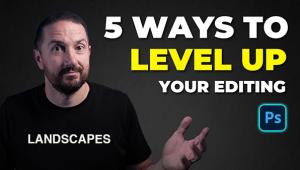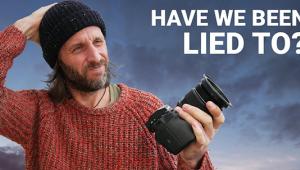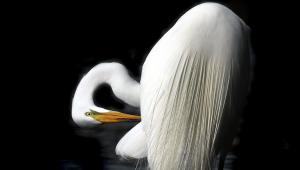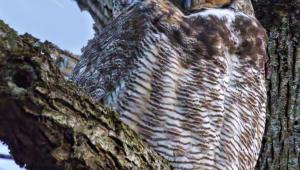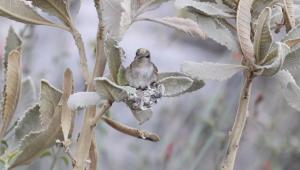High Times: 5 Tips on How to Shoot Gorgeous Landscape Photos in the Mountains

If you’re looking to shoot some unique outdoor photos in a somewhat unusual setting, you should consider packing your gear and heading for the hills. Here are a few tips for making great landscape photos during a trip to the mountains.
1. Be Prepared
Whether you’re planning a day trip, or intend to do some camping, it’s important to remember that weather conditions change rapidly in the mountains. Temperatures drop as you gain elevation, and you may even encounter remnants of snow at higher altitudes. So, plan accordingly, and make sure to pack rain gear, warm clothing, and plenty of water.
I prefer to travel light on long hikes, so my list of camera gear is pretty basic: one camera body, a fast wide-angle lens, a short telephoto zoom, and a lightweight tripod or monopod. And because there is more ultraviolet light in the thin mountain air than at sea level, I always have a UV filter on each of my lenses—not only to eliminate the bluish tint that’s common to photos taken at altitude, but also to protect my expensive glass from blowing dust and damage.
A polarizing filter is also very helpful for darkening pale blue skies and eliminating reflections from water, snow, and shiny rocks. The only other “accessory” I bring, whenever possible, is a hiking companion who can serve as a model and give a hand if anything untoward happens (like a twisted ankle).
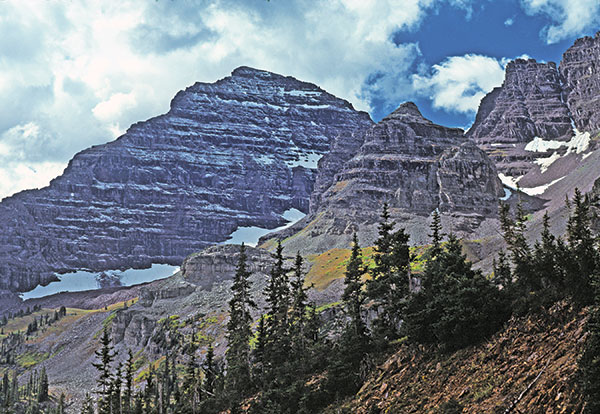
2. Consider Light & Composition
The quality of light in the mountains changes dramatically as the day progresses, and what appears to be a gentle, sloping peak in the morning can be transformed into a rugged, imposing form by late afternoon. It’s best to avoid the harsh midday light and do your shooting early and late, when the sun is at a low angle to the horizon. Shadows are dramatic at these times, and mountain scenery will stand out in great detail.
Thoughtful composition is important with all forms of photography, and absolutely essential for capturing powerful landscape scenes. When shooting in the mountains, it really helps to experiment with camera angles, avoiding the common mistake of composing photos with the horizon bisecting the shot. Shooting from a low perspective is one way to create images with impact, as is including an interesting foreground element, like a boulder or tree, when using a wide-angle lens.
3. Go Vertical
Another common mistake when capturing the splendor of the peaks is forgetting to shoot images in the vertical format. A vertical perspective helps accentuate the height of distant mountains and makes them look far more imposing.
You can also add variety to your images by moving in tight to capture detail shots of interesting objects like alpine flowers, rocks, or trees.
And remember that “human accessory” we mentioned earlier? Don’t forget to shoot a few environmental portraits during your hike. Including a person in the scene is a great way to provide a sense of scale to the majesty of the surrounding landscape.

4. Find Your Focus
Another important consideration for scenic mountain photography is choosing a proper point of focus. I rarely, if ever, focus on infinity—even when my subject is a mountain on the skyline.
That’s because doing so “wastes” whatever depth of field falls behind your faraway subject. When using wide-angle lenses, with their inherent broad zone of sharpness, I typically focus at a point two-thirds of the way into a scene and let depth of field handle the rest.
Even when using telephoto lenses, with their narrower zone of focus, I often experiment with small aperture settings and a focus point that’s a bit closer than the horizon. That way you’ll add some extra depth of field to the midrange of the shot.
5. Add Emotional Impact
You can add emotional impact to mountain landscape photos by carefully positioning yourself relative to the sun. For silhouettes, or images with high contrast, try shooting into the sun.
Conversely, shoot with the sun at your back to capture photos with brilliant, saturated colors. And to emphasize the rugged shapes of jagged mountain scenery, try positioning the sun to one side of the camera position.
If your mountain sojourn takes you up to the snow line, be sure to take your exposure reading off the white stuff, and dial in a stop or two of EV compensation—otherwise, you’ll end up with gray, dirty-looking snow. And if you’re lucky enough to be in the mountains when a bright moon bathes the landscape with soft light, be sure to do some shooting at night.
A trip to the mountains not only provides great photographic opportunities, but it is also really good for the soul. As Ansel Adams once remarked about the power of a great mountain, “It speaks in silence to the very core of your being.”
- Log in or register to post comments

